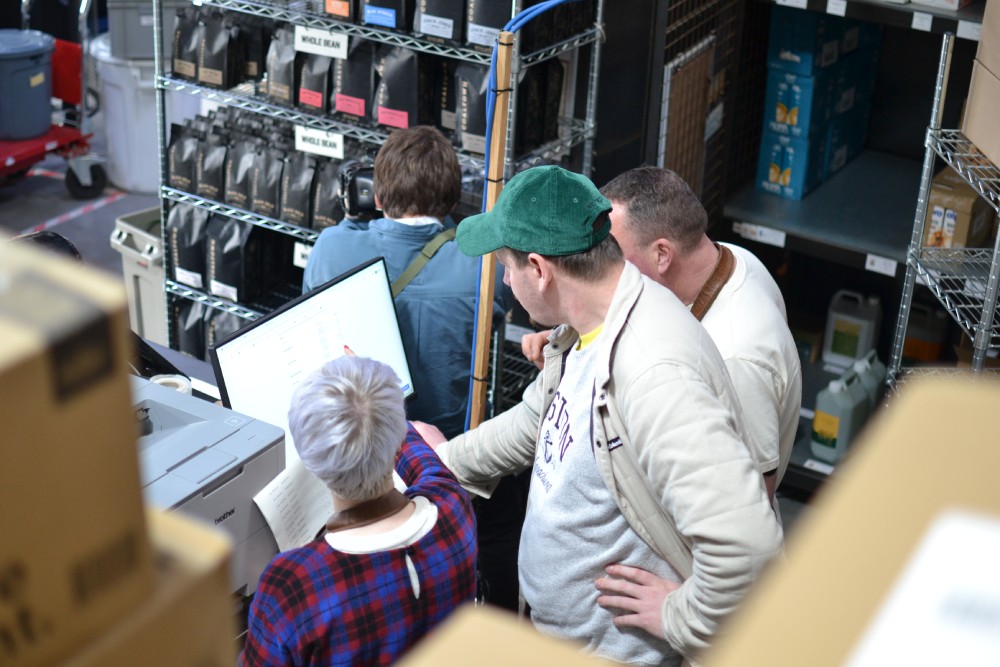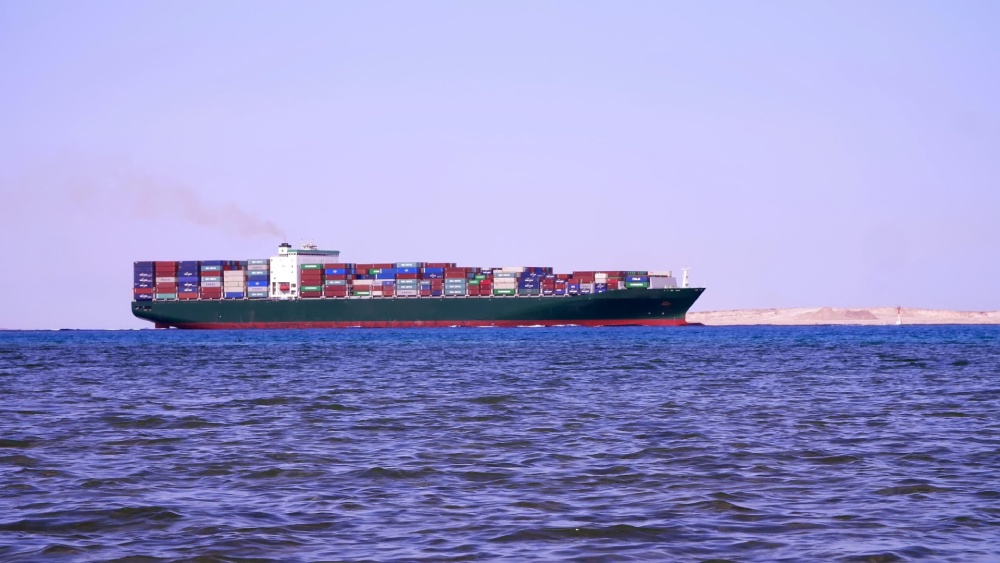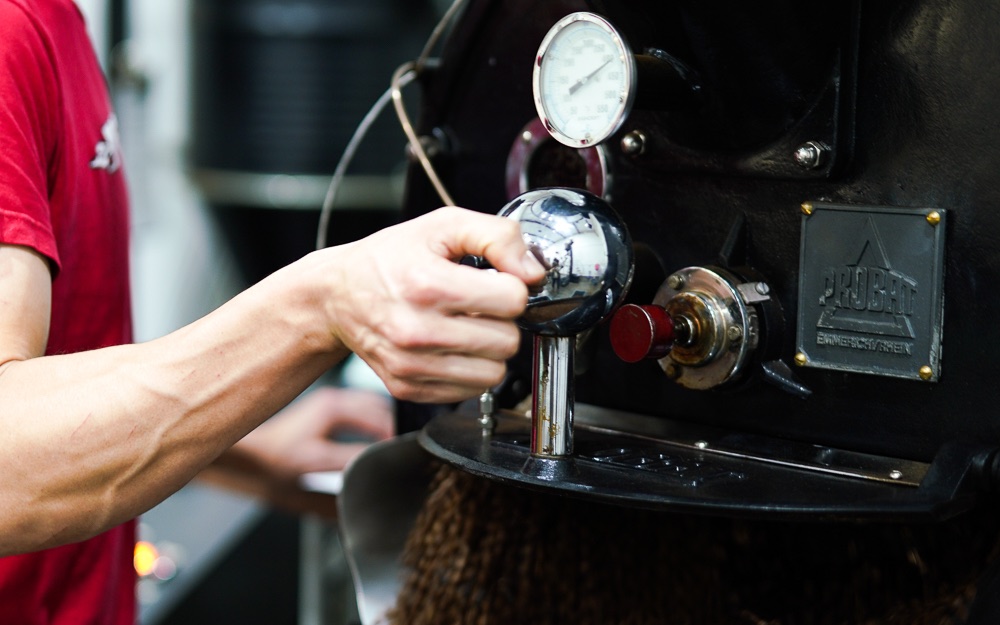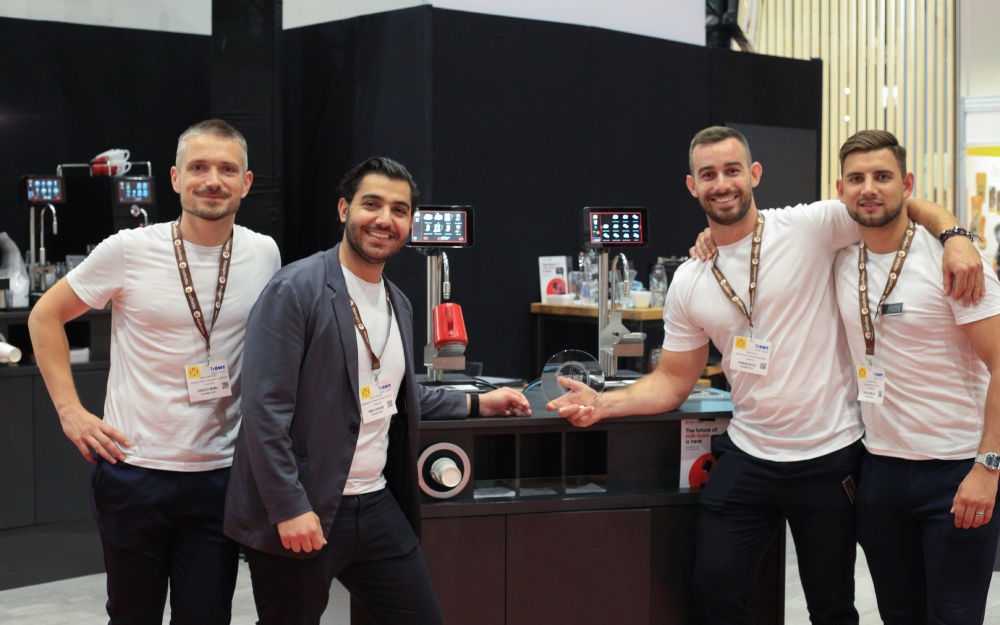Why streamlining roastery operations has never been so important

Although it’s incredibly rewarding, running a roastery certainly comes with its own set of challenges. And the past few years have been particularly difficult to navigate – with a volatile C price, supply chain issues, and economic downturn, to name a few hurdles.
So to tackle these issues – and remain profitable in an increasingly competitive market – roasters need to be creative. But in order to have the bandwidth to stay innovative, roasters need to seamlessly consolidate and streamline their operations and systems.
Inevitably, this means a growing reliance on technology that can improve efficiency – which has arguably never been so important.
To learn more, I spoke to Cassidy Nova, Inside Sales Manager of Commerce at Cropster, Aaron Rollins, Quality and Roasting Manager at Caffe Ibis, and Octavio H. Ruiz Cervera, founder of Tostadora de Cafés Extraordinarios and Almanegra Café.
You may also like our article on how data can be used to improve espresso extraction.
The challenges of running a roastery
Any roaster has to handle a seemingly endless list of operations and systems. From managing green coffee inventory to developing roast profiles to taking on new wholesale clients, keeping on top of all these tasks is essential to running a successful business.
Octavio H. Ruiz Cervera is the founder of Tostadora de Cafés Extraordinarios and Almanegra Café in Mexico. He explains that sourcing and roasting excellent coffee – all while carrying out high levels of quality control – is naturally the main focus for roasters.
“Ensuring that each batch of coffee meets our high standards of quality is a meticulous and ongoing process,” he says.
But that’s not all roasters need to be attentive to. As the specialty coffee market grows and becomes more competitive, standing out is key. There are a number of ways roasters can do this, such as:
Creating and selling signature blends that best represent their brand
Designing and updating packaging to be more eye catching
Offering more exclusive and limited-edition coffees (if this is in line with their branding and consumers’ preferences)
Moreover, the coffee market can be volatile, which roasters also need to prepare for. Whether it’s recent fluctuations in the C price (the market price for coffee) or navigating unforeseen supply chain issues, there is a much bigger picture that needs to be accounted for when managing a roastery.
As one example of many, the ongoing Red Sea crisis (which started in January 2024) has been causing delays to some of the world’s biggest trade routes – and no doubt has impacted coffee roasters.
Whether it’s due to extreme or unexpected weather events, global economic downturn, or social and political unrest, accounting for fluctuations in supply and demand is a crucial step in running a successful roastery and effectively balancing costs.
The shift towards automation
Cassidy Nova is the Inside Sales Manager of Commerce at Cropster – a roastery and café software solutions company.
“The world over, roasters are trying to reduce costs, and one key way to do that is streamlining operations,” he tells me. “They need the ability to reduce order and scheduling errors, save time and money, and improve efficiency with how they roast and package their coffee.”
Data collection and analysis then play a big role in this process. For example, data collected from roast profiles and quality control assessments can provide valuable insight into how roasters could reduce time between batches without compromising on coffee quality.
The integration of technology – both hardware and software – is crucial to this endeavour. Roasting technology ranges from machines with precise temperature control to platforms that can track and monitor both green and roasted coffee inventories.
This data-driven approach, of course, means relying on automation more than ever.
“Streamlining operations in a roastery is a multifaceted task, with automation playing a pivotal role,” Cassidy says. “Automation not only simplifies the roasting process, but also brings a high level of precision and consistency, which is essential for quality coffee.”
How to use automation to consolidate operations
In the context of the coffee industry, we often talk about using automation to optimise roast profiles or improve extraction. But the role of automation in roasteries and cafés extends much further beyond just roasting and brewing.
To cover all areas of their operations, coffee business owners are turning to automated solutions to streamline their systems as much as possible. Octavio tells me that Cropster Commerce is one example.
“While Cropster has always excelled in managing green coffee inventory, the introduction of Cropster Commerce extends this capability to roasted coffee, too,” he says. “This software has revolutionised the way roasteries can manage their operations, and provides better support to staff in various aspects of their work.
“It allows us to track our inventory more accurately, ensuring we roast only what is needed to fulfil orders, and thereby minimise waste,” he adds.
Not only does this mean roasters can offer fresher coffee to their customers, but they can also reduce costs and improve their sustainability practices.
Why integrating different systems is important
Streamlining operations as effectively as possible only works if all of a roaster’s systems are in sync. And with so many areas to cover – including stock management, quality control, staff training, and more – things can quickly become confusing if not done right.
“Integrating different systems is critical for roasteries like ours, as it helps with invoice generation under specific regulations (such as Mexican legislation) and provides a unified B2B interface,” Octavio explains. He adds that integrated order management and automated production scheduling can also reduce errors and provide staff with real-time information.
Aaron Rollins is the Quality and Roasting Manager at Caffe Ibis in Utah, US. He tells me how software like Cropster Commerce integrates different systems – including Shopify, Beans Wholesale Shop, and WooCommerce web stores with Cropster Roast.
“The platform creates a hub for all things needed to run a roastery,” he says. “Once you have more streamlined, traceable, and functioning inventory indicators, Cropster Commerce provides a great launching pad for any roastery to become more organised.”
Cassidy explains how the platform works, saying: “By importing orders directly into the software, roasters are able to automatically create schedules based on all the coffees that have been ordered and all the batches that have been roasted already.
“Every batch roasted with Cropster will create roasted inventory, which can be used to fulfil orders imported from any Shopify, Beans Wholesale Shop, and WooCommerce store,” he adds. “Using the green loss (the amount of coffee lost from green to roasted coffee) information in Cropster, the platform will automatically generate roasting schedules, packaging plans, and a list to prepare orders for shipment.”
Why more roasters will continue to streamline operations
On top of making it easier to navigate a particularly challenging market in recent years, the most obvious reason for roasters to optimise operations is to save time and reduce costs.
Streamlining and integrating different systems in a roastery means staff can spend less time on administrative tasks, and more on core business activities. Leveraging automation and data analysis to train staff more effectively can minimise their margin for error and allow for more sustainable business growth without compromising on quality.
Seeing the bigger picture
“Having this holistic view of our operations is instrumental to the continuous improvement and scaling of our business,” Octavio says. He adds that using automation to have a more precise measure of both green and roasted coffee inventory eliminates the need to input data manually, so roasters can focus on other aspects of their operations.
“One of the biggest advantages of Cropster Commerce is connecting all of your green inventory and roast profile data to the finished product – it’s exciting to create this traceability all the way through production,” Cassidy says. “You can create standard operating procedures to help with every step of the process, from roasting to packaging to order fulfilment.
“This removes the need to create manual spreadsheets, and allows roasters to streamline daily tasks,” he adds.
As the coffee industry continues to rely heavily on automation, we will see more and more roasters streamline and optimise their operations – and reap the rewards of doing so.
But to do this as effectively as possible, roasters need to first understand how to synchronise their management systems. By using automated platforms and software to their advantage, roasters can get better results more quickly – and be better prepared to face any challenges that come their way.
Enjoyed this? Then read our article on using software and data to improve performance in coffee shops.
Photos taken at: Coaltown Coffee Roasters
Perfect Daily Grind
Please note: Cropster is a sponsor of Perfect Daily Grind.
Want to read more articles like this? Sign up for our newsletter!
The post Why streamlining roastery operations has never been so important appeared first on Perfect Daily Grind.





Responses